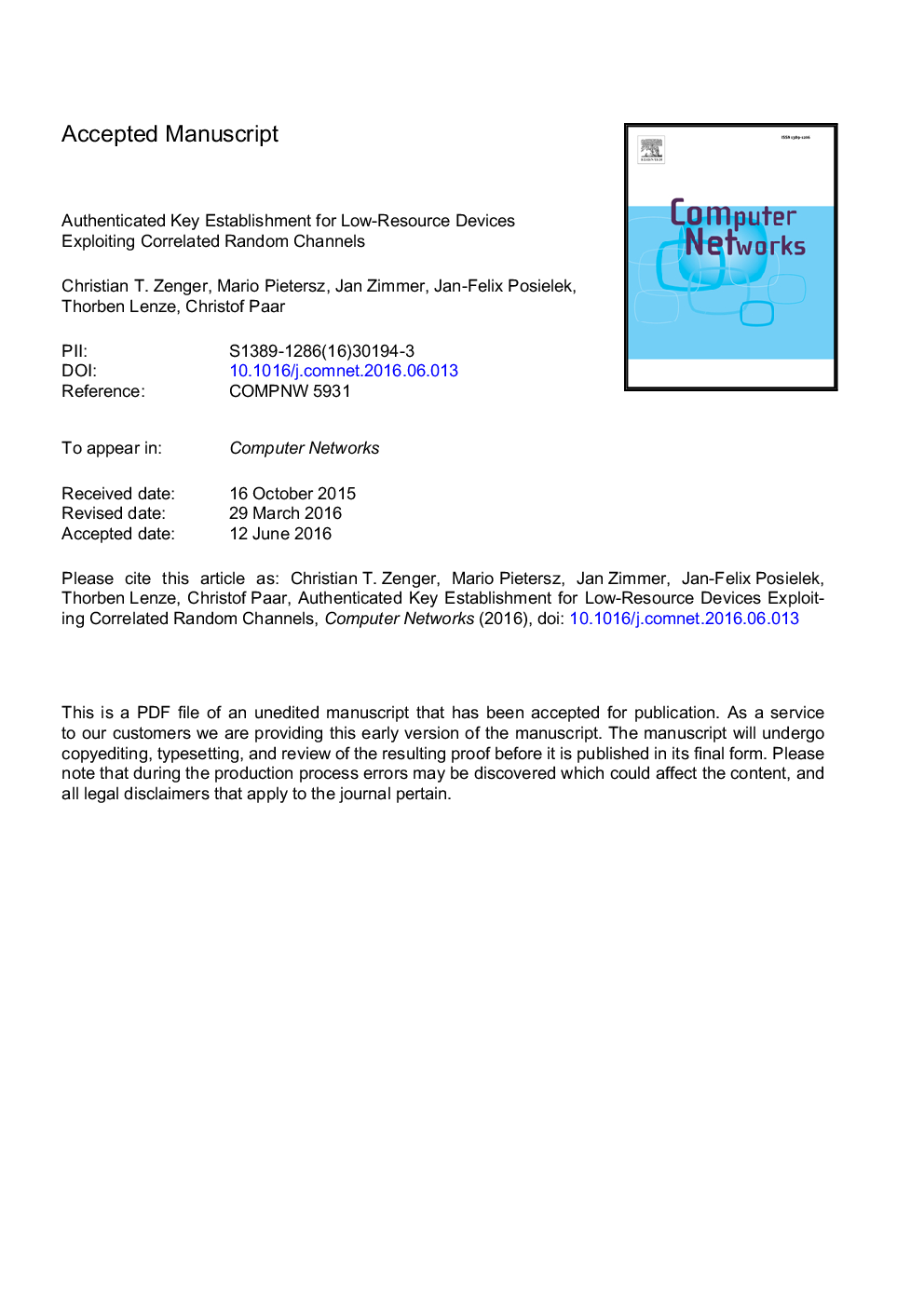| Article ID | Journal | Published Year | Pages | File Type |
|---|---|---|---|---|
| 4954919 | Computer Networks | 2016 | 26 Pages |
Abstract
Authenticated key establishment is a central requirement for securing IoT devices. For efficiency and management reasons, it might be desirable to avoid public-key-based solutions that are ubiquitous in traditional Internet settings but have many drawbacks for resource-constrained (RC) nodes. We introduce a novel Vicinity-based Pairing (VP) mechanism that allows authenticating arbitrary 'unloaded' RC-nodes by delegating trust from already authenticated and secured, we call it 'loaded', RC-nodes. For authenticating RC-nodes, VP exploits the correlation between channel profiles from devices that are in close physical proximity. In our setting, only devices that are within a few centimetres from the 'loaded' RC-nodes are authenticated after a user initiates such a process. Subsequently, the embedded end device can extract an unique shared symmetric key with another device such as a SCADA gateway, again by exploiting channel parameters. Based on extensive experiments, we propose new techniques for extracting time-varying randomness from channel parameters for use in VP. We describe the first MITM-resistant device pairing protocol purely based on a single wireless interface with an extensive adversarial model and protocol analysis. We show that existing wireless devices can be retro-fitted with the VP protocol via software updates, i.e. without changes to the hardware. Implementation results of our embedded prototype demonstrates that the approach has the potential to dramatically reduce the cost and efforts of securing low-resource devices that are common in the IoT.
Keywords
Related Topics
Physical Sciences and Engineering
Computer Science
Computer Networks and Communications
Authors
Christian T. Zenger, Mario Pietersz, Jan Zimmer, Jan-Felix Posielek, Thorben Lenze, Christof Paar,
